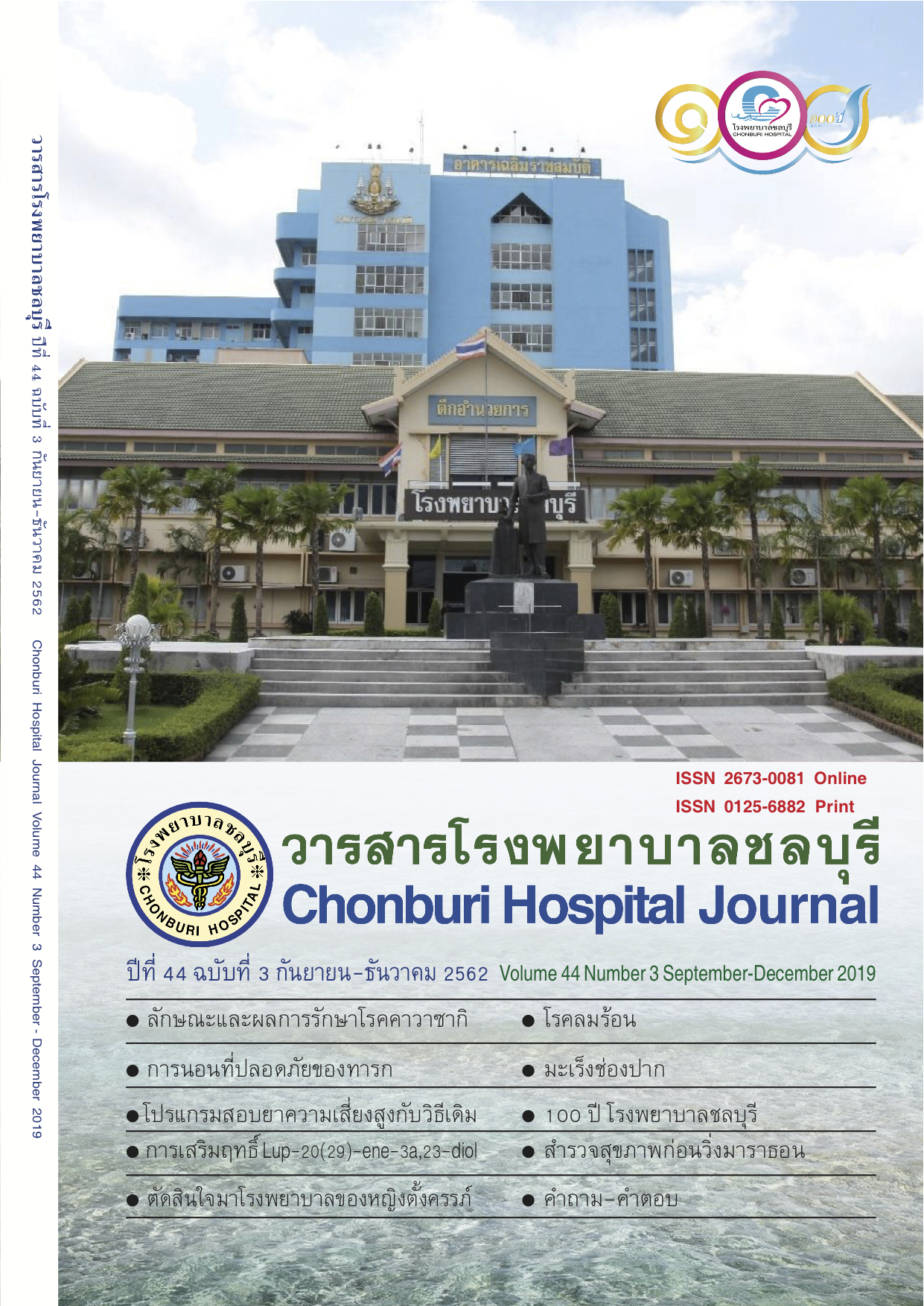Clinical Spectrums and Treatment Outcomes of Kawasaki Disease in Children
Abstract
The incidence of Kawasaki disease (KD) and the proportion of incomplete KD among all KD cases have increased progressively. National estimates of Kawasaki incidence based on disease registries in Thailand in the year 1998-2002 was 2.14 to 3.43 per 100,000 children less than 5 years old and the other study reported similar clinical spectrum between incomplete and complete KD. This study was designed to evaluate the current incidence of KD in Thailand and to compare clinical spectrum and treatment outcomes between incomplete and complete KD.
KD patients who were admitted at Chonburi hospital, Thailand during 2007-2014 were studied. A number of children with KD per year were recorded. Clinical characteristics, laboratory findings, echocardiography findings and treatment results were reviewed. There were 244 patients. The annual incidence rates of KD were 24.5-48 cases annually per 100,000 children less than 5 years old. The average yearly proportion of incomplete from total KD patients was 53%. The mean age was 26.5±15.6 months. The majority of patients were male N=165 (67.6%). The patients with the age of fewer than six months were significantly higher in the patients with incomplete than complete KD 20(15.3%) versus 7(6.2%); p=0.024. There were no significant differences in clinical symptoms, laboratory investigation and echocardiography findings between both groups. Days of fever for first dose IVIG in incomplete KD 8.3±3.8 were significantly more than complete KD 7.2±3.4 (p= 0.021)
The incidence of KD increased especially incomplete KD. Clinical spectrums and treatment outcomes of patients with incomplete and complete KD had the same spectrums.
Keywords: Kawasaki disease, clinical spectrum, treatment outcome

